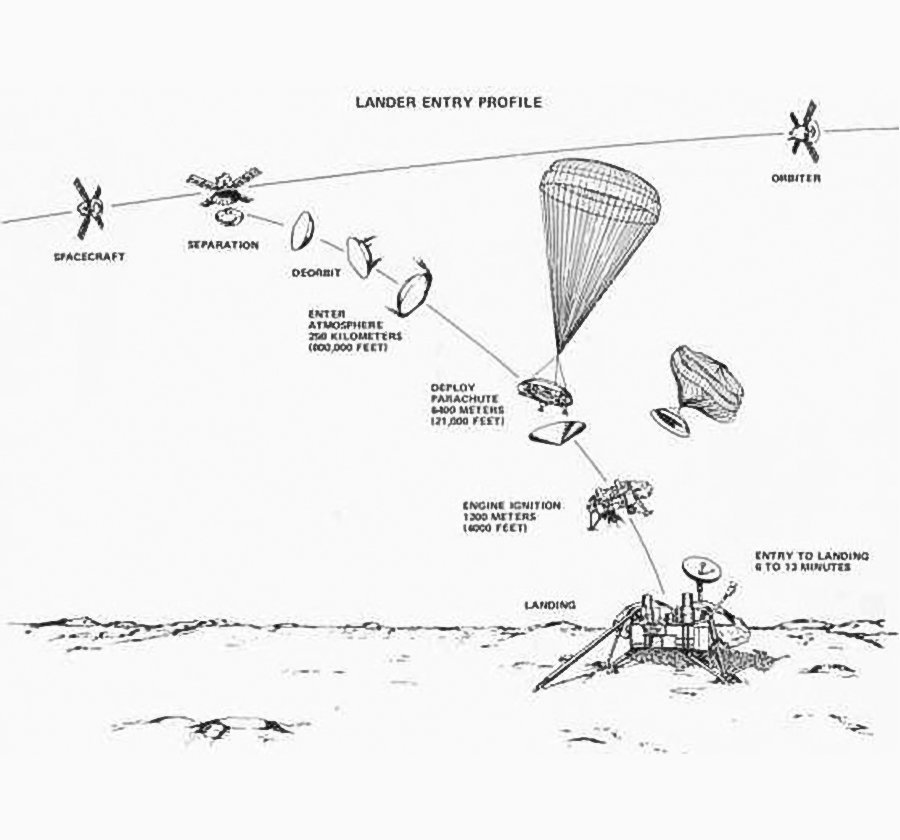The Vikings Expedition to Mars

Did you know the Vikings went to Mars? Well, not the people Vikings but robot Viking. By 1976, the National Aeronautics and Space Administration (NASA) created the Viking Project. This project is to send twin spacecraft to the surface of Mars and its orbit. This venture will later become the first Mars landing. And also give the world the first images of the Martian surface.
After learning about… I hope you are now excited to learn more about NASA’s Viking Project. Here is a brief story of the Viking Project.
Viking Project

NASA’s Viking Project was an effort to study Mars. Moreover, this drive to study Mars comes from the curiosity to know if there is or was life on Mars. As such, the project called for the development of one orbiter and a lander. NASA will deploy the first onto the Martian orbit to study the planet from above. While Viking’s lander will be landing on the surface to study from the ground.

To do this, NASA built the Viking orbiter and lander. They design these spacecraft to have a plethora of scientific instruments. As such, the lander was able to obtain high-resolution images of the Martian surface using two identical cameras. Then using its other onboard devices it can characterize the structure and composition of the atmosphere and surface. In orbit, The Viking’s orbiter will map and analyze large expanses of the Martian surface. It will also observe weather patterns and photographed the planet’s two tiny moons. Lastly, the orbiter will serve as a relay point from Earth to the Viking landers on the surface.
NASA with relatively easily can place the Viking’s orbiter in Martian orbit. Because it was based on already-proven technology. The orbiter is based on the Mariner 9 spacecraft. This was NASA’s previous project that also orbited Mars. But putting the Viking’s lander on the surface is the difficult part. Because space landings are violent. So, NASA’s problem is how to decrease the descent of the lander once entering the atmosphere. They need to cushion the landing to a point it does not destroy itself.

Landing on Mars

On the 20th of August 1975, NASA launched Viking 1 at Cape Canaveral, Florida. The spacecraft took a nine months journey to reach Mars’ orbit. Viking 1 arrived at its destination on the 19th of June 1976. The orbiter immediately started site certification for the lander once arriving. After one month, it was determined the landing site will be on the Golden Plain (Chryse Planitia). This was in the northern equatorial region of Mars.

By the 20th of July 1976, Viking’s lander started its descent. First, the lander separated itself from the orbiter. Next, the craft ignited its thrusters to orient the lander’s aeroshell. This will protect the lander from the heat and also help it decelerate. The lander entered Mars at a velocity of 16,500 kilometers per hour (kph). When the craft reaches 6 km in attitude it deploys its supersonic parachute. Subsequently, the lander jettisoned its aeroshell and then extended its legs for landing. Thanks to the parachute, the craft will reduce its speed to 220 kph. The lander’s three Terminal Descent Engines (TDE) ignited at 1.5 km above the surface. They continued to fire until the lander’s legs touched the ground.

TDEs were a game changer for this mission. This device did so many things right that allowed the mission to succeed. Firstly, the engines were to generate 2,600-newton of force to land the craft gently. This protects the scientific instruments in the lander. Secondly, the TDEs protected the landing site from any contamination. Because the lander is a stationary craft once it has landed on the surface. As such it can collect samples of its surrounding area. Thanks to the TDE’s advanced exhaust design and the use of hydrazine mono-propellant… The craft was able to land without altering the landing site environment.
Seeing Mars

The lander transmitted the first surface image of Mar after 25 seconds of landing. Both the lander and orbiter continued to deliver vital information about Mars to Earth. Later on, NASA would launch another mission to Mars. Launching Viking 2 took place on the 9th of September 1975. The orbiter arrived at its destination on the 7th of August 7. While the landing reached the surface of Mars on the 3rd of September 1976. This time, NASA’s scientists placed Viking 2’s lander in the volcanic region of Utopia Planitia.

In the end, the Viking Project taught us that we knew little about life on Earth and how to detect it. As a result, we did not get definitive answers about life outside our planet. But the Viking Project did open our eyes to new possibilities. The only thing we have to do now is to push further and build upon what we have learned from Viking.
Martin is your average manileño. He loves history and traveling around his beloved Metro Manila. His passion is to make the past come to life by exposing past stories not known by the general public. Tag along with him as he visits the past through the present.











